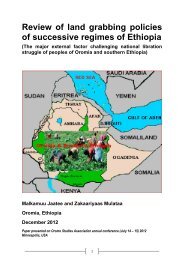freakonomics
freakonomics
freakonomics
Create successful ePaper yourself
Turn your PDF publications into a flip-book with our unique Google optimized e-Paper software.
from other professors more to be exposed to other ways of teaching graduate material.”<br />
Then there was the troubling allegation that Lott actually in vented some of the survey<br />
data that support his more-guns/less-crime theory. Regardless of whether the data were<br />
faked, Lott’s admittedly intriguing hypothesis doesn’t seem to be true. When other<br />
scholars have tried to replicate his results, they found that right-to-carry laws simply<br />
don’t bring down crime.<br />
Consider the next crime-drop explanation: the bursting of the crack bubble. Crack<br />
cocaine was such a potent, addictive drug that a hugely profitable market had been<br />
created practically overnight. True, it was only the leaders of the crack gangs who were<br />
getting rich. But that only made the street-level dealers all the more desperate to advance.<br />
Many of them were willing to kill their rivals to do so, whether the rival belonged to the<br />
same gang or a different one. There were also gun battles over valuable drug-selling<br />
corners. The typical crack murder involved one crack dealer shooting another (or two of<br />
them, or three) and not, contrary to conventional wisdom, some bug-eyed crackhead<br />
shooting a shopkeeper over a few dollars. The result was a huge increase in violent crime.<br />
One study found that more than 25 percent of the homicides in New York City in 1988<br />
were crack-related.<br />
The violence associated with crack began to ebb in about 1991. This has led many people<br />
to think that crack itself went away. It didn’t. Smoking crack remains much more popular<br />
today than most people realize. Nearly 5 percent of all arrests in the United States are still<br />
related to cocaine (as against 6 percent at crack’s peak); nor have emergency room visits<br />
for crack users diminished all that much.<br />
What did go away were the huge profits for selling crack. The price of cocaine had been<br />
falling for years, and it got only cheaper as crack grew more popular. Dealers began to<br />
underprice one another; profits vanished. The crack bubble burst as dramatically as the<br />
Nasdaq bubble would eventually burst. (Think of the first generation of crack dealers as<br />
the Microsoft millionaires; think of the second generation as Pets.com.) As veteran crack<br />
dealers were killed or sent to prison, younger dealers decided that the smaller profits<br />
didn’t justify the risk. The tournament had lost its allure. It was no longer worth killing<br />
someone to steal their crack turf, and certainly not worth being killed.<br />
So the violence abated. From 1991 to 2001, the homicide rate among young black men—<br />
who were disproportionately represented among crack dealers—fell 48 percent,<br />
compared to 30 percent for older black men and older white men. (Another minor<br />
contributor to the falling homicide rate is the fact that some crack dealers took to<br />
shooting their enemies in the buttocks rather than murdering them; this method of violent<br />
insult was considered more degrading—and was obviously less severely punished—than<br />
murder.) All told, the crash of the crack market accounted for roughly 15 percent of the<br />
crime drop of the 1990s—a substantial factor, to be sure, though it should be noted that<br />
crack was responsible for far more than 15 percent of the crime increase of the 1980s. In









